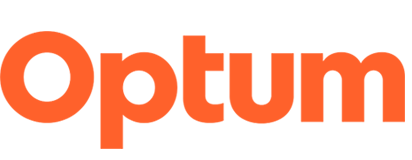Health care is waking up to a new digital experience
Discover how health care organizations are pivoting towards digital tools.
Eric Rock | April 9, 2020
Are we ready to manage our own health remotely?
The vision to provide health care remotely was alive and well as early as 1879. That’s when the medical journal, The Lancet, published an article about using the telephone to cut down on unneeded visits to the doctor’s office.
Now, here we are over 140 years later and, like the telephone itself, “telehealth” has come a long way — and just in time. With all of us feeling the effects of the coronavirus disease 2019 (COVID-19) and the attempts to contain it, demand for telehealth services has surged in the past weeks.
We’ve reached a century-defining moment when mobile devices that enable the use of remote patient monitoring (RPM) have become critical for both addressing the threat of the virus itself and reducing the risk of exposure for others who still need access to care amid the turmoil.
While RPM has garnered a lot of recent attention, many may not know what it is or how it works. RPM gathers patient data outside of traditional inpatient and outpatient health care settings. Information is collected using remote network-connected devices.
These connected devices, sometimes called the internet of medical things, come in all shapes and sizes, from mobile phones to the watches we wear.
A powerful health care tool, RPM gives people the ability to easily share health information, connect with providers and better manage their own health. RPM helps us transform episodic encounters into a continuous health care experience that is a natural part of our daily routine. And in the age of social distancing and self isolation, “remote” capabilities have taken on a whole new level of importance beyond convenience and cost-saving automation.
Remote patient monitoring - its time has come
Early on, RPM was costly and inefficient. Standalone medical monitoring devices were often expensive to develop. Unstable internet connections and limited bandwidth at home made remote access difficult. Studies did show RPM could help reduce costs, but that still was not enough to serve a mainstream market.
Then smartphones came on the scene. It is no surprise that the vast majority of Americans — 96% — now own a cell phone of some kind. Along with mobile phones, Americans own a range of other health devices such as wearable fitness trackers. Many of these devices help make remote health monitoring more economical to use on a large scale.
Most importantly, we as a society are ready to make the change to managing our own health remotely. The Consumer Technology Association (CTA) reports 56% of consumers would happily share health data with their doctors if they believed it would lead to a more accurate diagnosis and better treatment.
Welcome to a new digital health experience
Even before the COVID-19 outbreak, RPM had caught the attention of an often cautious health care community. And there’s evidence to suggest RPM will have a lasting impact on routine health appointments, with a combination of face-to-face and digital interactions where remote monitoring will be a part of the service mix.
In fact, 68% of physicians “strongly intend” to use RPM technology in the future, according to the CTA report. The top perceived benefits, according to physicians participating in the study, include:
- Improved patient outcomes
- Improved care plan compliance rates
- Patients taking more ownership of their health
A major health system tests RPM for patients at home
Telehealth and RPM aren’t just for times of crisis. Before RPM, the University of Pittsburgh Medical Center (UPMC) did not have easy access to monitoring their patients at home. The frequency with which patient information was collected was not ideal. Moreover, home-based patients could not access UPMC care on their own time and schedule.
The Pittsburgh health system wanted to take action and improve access to patients at home. They wanted to reach patients from the sickest of the sick, all the way to people participating in more light-touch, post-discharge, smoking-cessation programs.
UPMC began working with the team here at Vivify Health. With Vivify, providers can start with a population or single patient on a simple pathway. A typical session for patients may incorporate wireless biometric devices, health surveys, educational videos and virtual visits with their providers.
Based on a patient’s health events, intervention, escalation and additional content, we can automatically create a custom path without a lot of manual effort.
Overall positive results validate the potential impact of an emerging technology
For UPMC, we began with congestive heart failure (CHF) patients. Initial results helped validate the potential benefits and we have now expanded to multiple clinical uses cases. These include care ranging from advanced illnesses to inflammatory bowel disease and tobacco treatment services.
Some of the key findings included:
- Medicare members who enrolled in the Vivify program were 74% less likely to be readmitted to the hospital within 90 days from discharge
- Patient compliance ranged between 90% to 93% with the average patient age of 74.
- Patients rated the program 93% in satisfaction.
Best of all, individuals enrolled in the program could track their progress. Whether it’s the type of food or amount of exercise, changing long-standing habits can be frustrating. People are usually more likely to stick to making the changes needed if they can see their results along the way.
The human touch behind the technology
Amid this digital transformation, one important element remains in place: There’s always a clinician behind the technology. Doctors, nurses and other care professionals offer human oversight as needed — but it goes beyond that. Artificial intelligence (AI) performs better alongside providers because they know what’s best from a care services standpoint.
While the primary goal is to keep patients out of the hospital setting unnecessarily, the most vital objective is to keep patients’ health from getting worse.
Often, a virtual visit with the provider will suffice to assess a patient’s condition and engage the patient as if they’re meeting in person. This approach allows care providers to know what’s been happening with the patient more regularly, improving their ongoing care management. And in trying times like these, that can make a world of difference for patients and providers alike.
Part of a digital health care revolution
In the pre-COVID-19 world, clinical, technological, financial and cultural trends were converging to incent the adoption of RPM. With physical access to care restricted in so many places, the timing could not be more prescient.
Government has accelerated this movement through two pieces of legislation: the Coronavirus Preparedness and Response Supplemental Appropriations Act, 2020 and the Coronavirus Aid, Relief, and Economic Security (CARES) Act.
The first removed restrictions on the use of telemedicine for Medicare beneficiaries, with an estimated price tag of $500 million; the second authorizes over $17.9 billion to cover telehealth services for veterans and indigenous populations, as well as physical infrastructure projects like broadband internet expansion.
At Vivify, we are using our cloud-based remote care management platform to empower clinicians across the country and provide assurance to patients in this time of need.
As a leader in connected care management, we have developed and deployed COVID-19 pathways, with the differentiated ability to conduct virtual visits and in-app messaging, while reducing the spread through screening, monitoring and ongoing remote care. The pathways are free to clients and help reduce unnecessary exposures by screening at home.
The bottom line is we have the ability to connect with people based on their condition, location and their own schedule. We can engage patients with intuitive programs and relevant education. The ability to guide behavior and monitor progress remotely now allows clinicians to intervene when needed.
RPM is not only changing the way we communicate, but is also providing innovative ways for us to connect, interact and exchange information to help us all reach our health potential. That’s never been more important than now.
I invite you to join the conversation about COVID-19 and our industry’s efforts to confront the current challenges here. You can also learn more about Vivify here and check out our Optum blog feed for more stories on data, analytics and technology in health care.

Eric Rock
Founder and CEO of Vivify Health
Vivify Health is a part of Optum
Eric Rock has demonstrated repeat successes as an innovator and entrepreneur, having founded three highly successful software companies. In 2009, he launched Vivify Health. Rock studied electrical and computer engineering at Oklahoma State University, with postgraduate studies in artificial intelligence at Massachusetts Institute of Technology Sloan School of Management. He is a frequent speaker and accomplished inventor with several patents.
Sign up for updates
Receive fresh perspectives and expert advice on data, analytics and tech innovation in health care.
